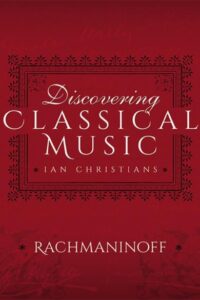Table of Contents
Rachmaninoff Vocalise (Easy Piano) sheet music, Noten, partitura, spartiti, partition, 楽譜
Come join us now, and enjoy playing your beloved music and browse through great scores of every level and styles!
Can’t find the songbook you’re looking for? Please, email us at: sheetmusiclibrarypdf@gmail.com We’d like to help you!
Best Sheet Music download from our Library.

Please, subscribe to our Library.
If you are already a subscriber, please, check our NEW SCORES’ page every month for new sheet music. THANK YOU!
Browse in the Library:
Or browse in the categories menus & download the Library Catalog PDF:
Rachmaninoff Vocalise
Sergei Rachmaninoff’s Vocalise (Op. 34, No. 14) is one of his most beloved and hauntingly beautiful compositions. Written in 1915 as part of his Fourteen Songs, Op. 34, it is the last piece in the set and stands out because it is the only one without words.
Key Features of Rachmaninoff Vocalise :
- Wordless Singing – As the title suggests, Vocalise is sung on a single vowel (usually “ah” or “oo”) rather than a text. This allows the singer to focus purely on tone, phrasing, and emotion.
- Emotional Depth – The piece is deeply melancholic and lyrical, characteristic of Rachmaninoff’s lush Romantic style. It conveys longing, sorrow, and a sense of transcendence.
- Flexible Instrumentation – Though originally written for soprano voice and piano, Vocalise has been arranged for many instruments, including violin, cello, flute, orchestra, and even choir. Some famous versions include those by Jascha Heifetz (violin) and Mstislav Rostropovich (cello).
- Structure – It is in a simple ternary (ABA) form, with a soaring, expansive melody that builds in intensity before returning to a quiet, reflective close.
Why Is It So Famous?
- Timeless Melody – The tune is unforgettable, blending Russian romanticism with a universal emotional appeal.
- Technical & Expressive Challenge – Singers and instrumentalists must sustain long, seamless phrases with perfect control and deep feeling.
- Adaptability – Its lack of words makes it universally accessible, and its beauty translates effortlessly across different instruments.
Notable Performances & Recordings
- Anna Moffo (soprano) – A classic vocal rendition.
- Jascha Heifetz (violin) – A breathtaking instrumental version.
- Mstislav Rostropovich (cello) – Deeply expressive and rich in tone.
- Orchestral versions – Rachmaninoff himself arranged it for orchestra, and it is often performed in this form.
Vocalise remains one of Rachmaninoff’s most enduring works, cherished for its purity, emotional depth, and sheer beauty. Whether sung or played, it never fails to move listeners.
Rachmaninoff’s Vocalise is a masterclass in lush, late-Romantic harmony, blending chromaticism, modal mixture, and expressive voice leading to create its signature melancholy beauty. Here’s a breakdown of its harmonic language:
1. Tonality and Key Structure
- Written in E minor, but constantly shifts between major and minor inflections (a Rachmaninoff trademark).
- The piece oscillates between tonic (E minor) and its relative major (G major), with fleeting modulations to distant keys (e.g., B minor, C major).
2. Chromaticism and Voice Leading
- Rachmaninoff uses stepwise chromatic motion in inner voices to create tension and yearning. For example:
- The opening melody (E–F♯–G) is supported by a descending chromatic bass (E–D♯–D–C♯).
- The harmony often slips into secondary dominants (e.g., V/V) and appoggiaturas for emotional intensity.
- Suspensions and delayed resolutions heighten the sense of longing (e.g., the 4–3 suspension over the dominant in mm. 3–4).
3. Modal Mixture (Borrowed Chords)
- Rachmaninoff blends Aeolian (natural minor) and harmonic minor colors:
- The major IV chord (A major) appears alongside the minor iv (A minor), creating bittersweet contrasts.
- The Picardy third (E major chord) briefly brightens the ending of phrases.
- Borrowed chords from parallel major (e.g., C major in E minor) add unexpected warmth.
4. Harmonic Progression Highlights
- Opening Phrase (mm. 1–4):
i – V7/iv – iv – V7 – i(with chromatic bass motion).
The V7/iv (B7) acts as a deceptive pivot, pulling toward A minor instead of resolving to E major. - Climactic Phrase (mm. 17–20):
A surge to B minor (vi of D major, the dominant’s dominant) creates a fleeting, passionate departure. - Coda (final bars):
The harmony dissolves into E major (Picardy third), but the piano’s lingering E minor arpeggio in the bass undermines full resolution, leaving a sense of quiet ambiguity.
5. Rachmaninoff’s “Signature” Harmonies
- “Rachmaninoff’s Tears” Progression: Descending minor-key sequences with added 7ths and 9ths (e.g.,
Em7 – A7 – Dm7 – G7 – Cmaj7in later arrangements). - Plagal Cadences: The piece ends with a IV–I motion in E major (A–E), evoking a hymn-like serenity.
Rachmaninoff’s harmony in Vocalise is both nostalgic and modern—rooted in Romanticism but hinting at early 20th-century tonal ambiguity. The interplay of chromatic lines and modal shifts makes the piece feel like a “sigh” in musical form.
Fantastic! Let’s dive into one of the most harmonically rich moments in Vocalise—the climactic high note (mm. 17–20)—where Rachmaninoff’s chromatic genius and emotional intensity peak.
Climax Analysis (Measures 17–20)
Context: The melody soars to its highest note (B₄ for soprano, or equivalent on instruments) over a harmonically unstable progression that briefly escapes E minor.
Harmonic Breakdown:
- m. 17 (Start of Climax):
- Chord:
B minor (vi)in D major (V of V). - Function: A deceptive pivot—instead of resolving to E minor, Rachmaninoff “sidesteps” into B minor, creating a fleeting brightening. The melody’s G♯ (mm. 17–18) hints at D major’s leading tone, teasing a modulation.
- m. 18 (Tension Builds):
- Chord:
F♯7 (V7/V)resolving deceptively toB7 (V7 of E minor). - Trick: The F♯7 should resolve to B major (V), but Rachmaninoff morphs it into B7, reasserting E minor’s dominance. The bass descends chromatically (F♯–F♮–E), adding aching tension.
- m. 19 (High Note & Release):
- Melody: The climactic B₄ is harmonized by a
C major chord (♭VI in E minor), a borrowed chord from E Aeolian. This unexpected major harmony (in a minor key) feels transcendent yet bittersweet. - Bass Line: Chromatic descent (C–B–A–G♯) under the C major chord pulls us back to E minor.
- m. 20 (Resolution):
- Cadence:
A minor (iv)–B7 (V7)–E minor (i). - Why It Hurts: The A minor (iv) delays the resolution, while the B7’s D♯ clashes poignantly against the melody’s D♮ (a minor 9th dissonance).
Rachmaninoff’s Harmonic Sorcery:
- Chromatic Voice Leading: The inner voices move by half-steps (e.g., D♯→D♮ in the alto, G♯→G♮ in the tenor), thickening the emotional texture.
- Modal Ambiguity: The C major (♭VI) and A major (IV) chords blur E minor’s tonal center, evoking a “limbo” between sorrow and hope.
- Delayed Gratification: The climax avoids a straightforward cadence, instead winding down through a chain of suspensions (e.g., the 7–6 resolution over B7).
Performance Insight:
Singers/instrumentalists often swell dynamically on the high B₄, but Rachmaninoff’s harmony underscores it with quiet restraint (the C major chord is marked piano). This contrast between melodic peak and harmonic fragility makes the moment devastatingly intimate.
Compare to Other Works:
- Similar harmonic tension appears in his Piano Concerto No. 2 (II. Adagio) and Symphonic Dances—Rachmaninoff’s “sighing” chromaticism is a fingerprint.
Harmonies in Rachmaninoff Vocalise:
The harmonies in Rachmaninoff’s Vocalise are so nuanced that performers often emphasize different aspects—chromatic tension, voice leading, or modal colors—based on their instrument and interpretive style. Here’s how legendary artists shape the harmony through phrasing, dynamics, and timbre:
1. Anna Moffo (Soprano) – Vocal Version
- Highlighting Chromatic Sorrow: In the climax (mm. 17–20), Moffo’s voice floats the high B₄ with a diminuendo, mirroring the C major chord’s piano marking. She leans into the dissonance between the melody (D♮) and the B7 harmony (D♯), making the resolution to E minor feel like a tearful release.
- Wordless Nuance: Her vowel choice (“ah”) darkens on minor chords (e.g., E minor) and brightens on major inflections (e.g., C major), subtly coloring the harmony.
2. Jascha Heifetz (Violin) – Instrumental Version
- Intensifying Voice Leading: Heifetz’s razor-sharp portamento (slides) between notes exaggerates Rachmaninoff’s inner chromatic lines. In the climax, he digs into the F♯7–B7 progression with a gritty forte, making the harmonic deception visceral.
- Vibrato as Harmonic Commentary: On the C major chord (m. 19), he uses a fast, narrow vibrato to underscore its alien warmth in E minor, then widens it on the resolving B7 for anguish.
3. Mstislav Rostropovich (Cello) – Deepened Dissonances
- Bass-Register Gravitas: Rostropovich’s low register amplifies the descending chromatic bass line (e.g., F♯–F♮–E in mm. 18–19), making the harmonic clashes feel earth-shattering.
- “Cello Sighs”: In the A minor–B7–E minor cadence (m. 20), he delays the B7’s resolution with a tenuto (held note), emphasizing the minor 9th (D♯ against D♮) as a groan.
4. Sergei Rachmaninoff (Piano Accompaniment) – Composer’s Intent
- Pedaling the Ambiguity: In his own recordings, Rachmaninoff blurs harmonic transitions with sustained pedal, letting chords like C major (♭VI) and A major (IV) bleed into each other, creating a dreamlike haze.
- Bass-Line Clarity: His left hand emphasizes the descending chromatic bass (e.g., E–D♯–D–C♯ in the opening), grounding the harmony even as the right hand floats ambiguously.
5. Orchestral Versions (e.g., Eugene Ormandy/Philadelphia Orchestra)
- Timbral Shifts: The strings play the climax’s C major chord with muted sul tasto (over the fingerboard), making it sound distant and ephemeral, while the B7 is unmuted and brassy for stark contrast.
- Woodwind Chromaticism: Flutes and clarinets amplify Rachmaninoff’s inner chromatic lines (e.g., the G♯–G♮ motion in mm. 17–18), turning harmony into orchestral chatter.
Key Interpretive Choices Across Performers:
| Harmonic Moment | Vocal Approach | Violin Approach | Cello Approach |
|---|---|---|---|
| Climax (C major chord) | Float with vulnerability | Brighten with pressure | Warm, covered timbre |
| B7–E minor resolution | Sigh into the resolution | Aggressive vibrato | Groaning portamento |
| Opening chromaticism | Pure vowel tones | Slides between notes | Weighted bow strokes |
Why This Matters:
Rachmaninoff’s harmonies are a palette—performers “mix” them differently. A singer might prioritize melodic purity, while a violinist exploits dissonances, and a cellist magnifies bass-line gravity. Each reveals new layers in the same score.
Want to compare specific recordings? For example:
- Heifetz vs. Hilary Hahn in the climax.
- Rostropovich vs. Yo-Yo Ma’s harmonic phrasing.
- How operatic vs. jazz singers handle the chromaticism.
Browse in the Library:
Or browse in the categories menus & download the Library Catalog PDF:
